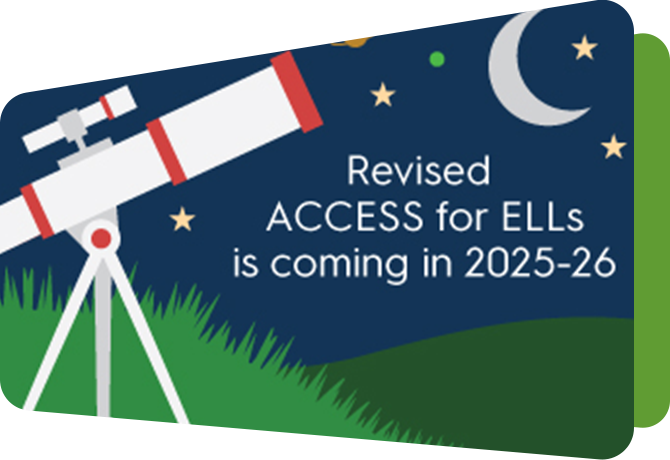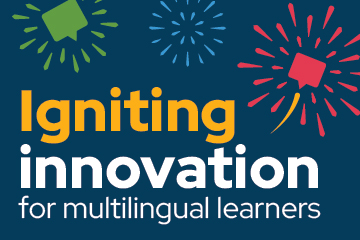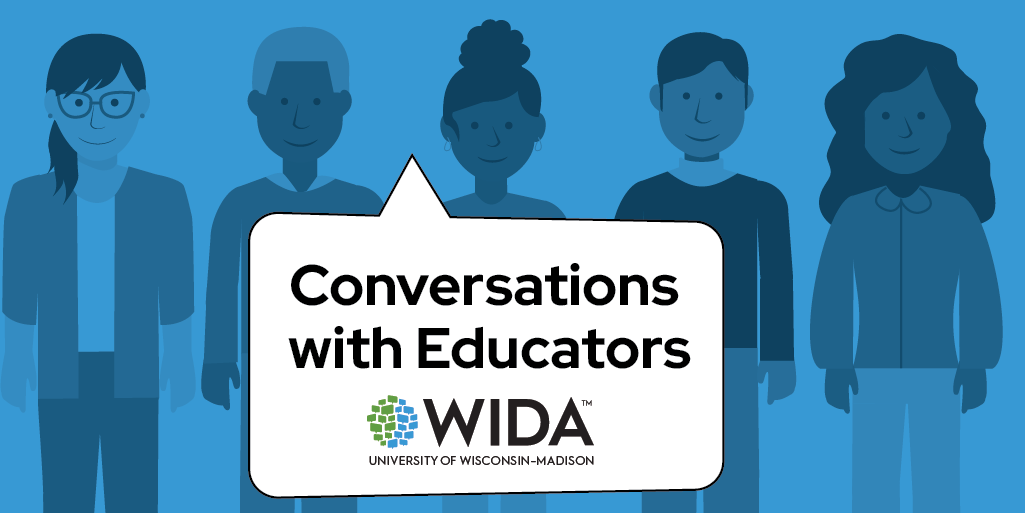Resources/Recursos
Featured Resources



All resources/Todos los recursos
Filter resources by:
Resources/Recursos
Curricular Considerations: Introduction to Collaborating Around the 2020 Edition
The WIDA ELD Standards Framework, 2020 Edition brings new practical ways for all educators working with multilingual learners to conceptualize the development of content and language together through asset-based, equitable, and rigorous approaches in curricular design. This session will encourage participants to think about what collaboration looks like in these contexts.
Resource DetailsReleased February 2021
Introduction to the Updated Key Language Uses
One of the components of the WIDA ELD Standards Framework is the Key Language Uses (KLUs). The KLUs summarize the most prominent language uses across disciplines, helping educators organize and prioritize curriculum and instruction. Learn about the updated KLUs – Inform, Narrate, Explain and Argue.
Resource DetailsReleased February 2021
WIDA Screener for Kindergarten Proficiency Level Descriptors
This guide illustrates a continuum of language development for multilingual Kindergarten learners and describes what they can do across six levels of English language proficiency.
Resource Details View Download NowReleased February 2021
Introduction to the 2020 Edition
Members of the WIDA standards development team share a high-level overview of what’s new and exciting in the WIDA English Language Development Standards Framework, 2020 Edition. Intended for SEA representatives, district leaders, and EL and content teachers.
Resource DetailsReleased January 2021
Introduction to the WIDA ELD Standards Framework, 2020 Edition
This video provides an introductory overview of the WIDA English Language Development Standards, 2020 Edition. It briefly highlights how the 2020 Edition fosters the assets, contributions, and potential of multilingual learners.
Resource DetailsReleased December 2020
Illustrated Guiding Principles of Language Development (multiple languages)
This illustrated booklet, available in multiple languages, brings each of the 10 WIDA Guiding Principles of Language Development to life and can be used by educators with parents, families and community members.
Resource DetailsReleased November 2020
Translanguaging
This focus bulletin explores translanguaging from the perspective of four educators, spanning kindergarten through high school. Translanguaging, a common practice among multilingual people, can be explained as using all languages and language varieties available to communicate and understand the world around oneself. The bulletin provides specific ideas on how to use translanguaging to create spaces for students' multilingualism and includes reflection questions to help educators adopt translanguaging strategies in their practice.
Resource Details View Download Now
Released September 2020
Can Do Descriptors Student Name Charts, Kindergarten
This chart allows educators to track students by their level of English language proficiency.
Resource Details View Download NowReleased June 2020
Can Do Descriptors Student Name Charts, Grade 1
This chart allows educators to track students by their level of English language proficiency.
Resource Details View Download NowReleased April 2020
Can Do Descriptors Student Name Charts, Grades 2-3
This chart allows educators to track students by their level of English language proficiency.
Resource Details View Download NowReleased April 2020
Can Do Descriptors Student Name Charts, Grades 4-5
This chart allows educators to track students by their level of English language proficiency.
Resource Details View Download NowReleased April 2020
Can Do Descriptors Student Name Charts, Grades 6-8
This chart allows educators to track students by their level of English language proficiency.
Resource Details View Download NowReleased April 2020
Can Do Descriptors Student Name Charts, Grades 9-12
This chart allows educators to track students by their level of English language proficiency.
Resource Details View Download NowReleased April 2020
WIDA Digital Wallpapers
Download "WIDA Wallpaper" to brighten your day! Six fun graphic designs are available for your desktop, laptop, tablet or smartphone. Share them with fellow educators and students to enjoy as they engage in virtual teaching and learning.
Resource DetailsReleased April 2020
Design Principles for Engaging Multilingual Learners in Three-Dimensional Science
WIDA and the National Science Teaching Association formed Making Science Multilingual to support inclusive forms of science instruction through which all students, but especially multilingual learners, can learn science and language simultaneously. To guide this work, the Making Science Multilingual team devised eight design principles to define the integration of contemporary three-dimensional science and language-in-use pedagogies. These principles will guide educator resource development at both organizations and facilitate critical examination of how well educator resources support inclusion of multilingual learners in rigorous science learning.
Resource DetailsReleased February 2020
WIDA Speaking Rubric Grades 1-12
Use the WIDA Speaking Rubric to understand the scores students earn on ACCESS for ELLs (Online and Paper), analyze student performance in the classroom, and plan ways to scaffold language learning.
Note: Do not use this rubric to score WIDA assessments. Find relevant scoring tools in the appropriate WIDA assessment training course.
Resource Details View Download NowReleased January 2020
WIDA Writing Rubric Grades 1-12
Use the WIDA Writing Rubric to understand the scores students earn on ACCESS for ELLs (Online and Paper), analyze student performance in the classroom, and plan ways to scaffold language learning.
Note: Do not use this rubric to score WIDA assessments. Find relevant scoring tools in the appropriate WIDA assessment training course.
Resource Details View Download NowReleased January 2020
Language and Culture
In February, 2011, WIDA published a Focus Bulletin on Language and Culture, which was enormously popular, and which continues to be requested by readers. This Focus Bulletin has been reformatted and lightly edited to emphasize current WIDA resources and terminology.
This Focus Bulletin explores linguistic and cultural diversity in school, and how teachers, staff and parents can help multilingual learners feel welcome, confident, and prepared to succeed academically.
Published September 2019
Authors: Don Bouchard, Mariana Castro, Andrea Cammilleri
Released December 2019
Guiding Principles of Language Development (multiple languages)
These guiding principles of language development and learning exemplify WIDA’s overarching foundational beliefs and ever-present Can Do Philosophy. The guide includes research citations and defines WIDA's use of the term multilingual learner.
This guide, available in multiple languages, can be used as a resource for educators to share with parents and families.
Resource DetailsReleased September 2019
Less Than Four Domains: Creating an Overall Composite Score as an Indicator of English Language Proficiency for English Learners with 504 or Individualized Education Plans
The illustrated models and procedures can be applied to calculate overall composite scores to identify an indicator of English language proficiency, based on composite scores for English learners with 504 or individualized education plans who are missing one or more domain scores on the Assessing Comprehension and Communication in English State-to-State for English Language Learners assessment for state monitoring, achievement and accountability determinations.
Resource DetailsReleased May 2019




